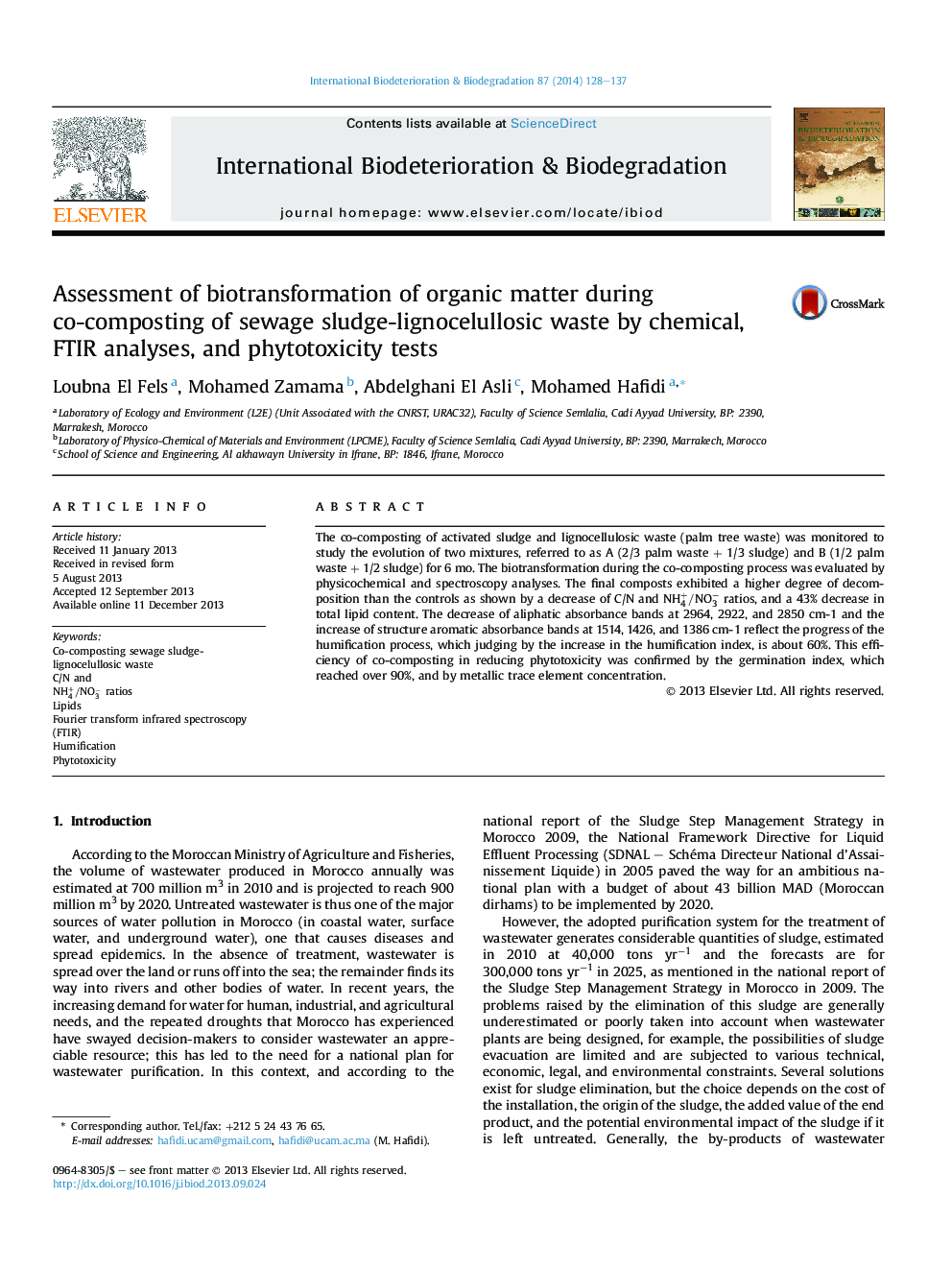| Article ID | Journal | Published Year | Pages | File Type |
|---|---|---|---|---|
| 4365007 | International Biodeterioration & Biodegradation | 2014 | 10 Pages |
•Co-composting sewage sludge-lignocelullosic waste.•Humification process and Fourier Transform Infrared Spectroscopy (FT-IR).•Maturity of composts and phytotoxicity.
The co-composting of activated sludge and lignocellulosic waste (palm tree waste) was monitored to study the evolution of two mixtures, referred to as A (2/3 palm waste + 1/3 sludge) and B (1/2 palm waste + 1/2 sludge) for 6 mo. The biotransformation during the co-composting process was evaluated by physicochemical and spectroscopy analyses. The final composts exhibited a higher degree of decomposition than the controls as shown by a decrease of C/N and NH4+/NO3− ratios, and a 43% decrease in total lipid content. The decrease of aliphatic absorbance bands at 2964, 2922, and 2850 cm-1 and the increase of structure aromatic absorbance bands at 1514, 1426, and 1386 cm-1 reflect the progress of the humification process, which judging by the increase in the humification index, is about 60%. This efficiency of co-composting in reducing phytotoxicity was confirmed by the germination index, which reached over 90%, and by metallic trace element concentration.
